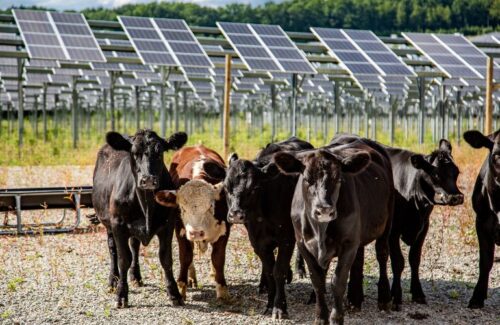Across the United States, energy demand is surging after decades of stagnant growth due to electrification efforts, data centers, and the development of artificial intelligence. As demand increases, the economics of wind and solar energy continue to lean towards them, as they always have cost-effectiveness advantages over natural gas and coal. When rural communities seek to increase renewable energy, a unique opportunity arises.
Flat, sunny, and easily accessible land is very suitable for solar farms, but it is usually already used for agriculture. A new report points out that by expanding the use of complementary agriculture and photovoltaics, renewable energy generation can be increased, water consumption can be reduced, and production can be increased, bringing dual benefits to renewable energy and agricultural communities.
Agricultural photovoltaic complementarity - integrating solar panels and active agriculture on the same land - provides a solution that benefits all three core stakeholders. Landowners have gained a new and stable source of income in volatile industries while maintaining the agricultural productivity of their land; Developers of solar energy projects can access feasible locations for the Feiwer license dispute; The community, on the other hand, maintains the production of agricultural land while enjoying local investment and tax revenue.
The recent short film, "Saving the Farm, Saving the Future," also highlights the benefits of agricultural photovoltaic complementarity.
Agricultural photovoltaic complementarity demonstrates that agricultural production and solar energy development can be complementary options for land use, rather than competitive options, "said Asher Salkin, former research intern at IEEFA and author of the report. Our research shows that using agricultural photovoltaic complementarity in agricultural environments can increase crop yields in areas with water scarcity, which not only reduces operating costs but also improves soil and ecosystem health
Although still not widespread, agricultural photovoltaic installations are expanding, growing from 27000 acres and 4.5 gigawatts of capacity in 2020 to over 62000 acres and 10 gigawatts by 2024- enough to power 1.5 million households. With supportive policies, agricultural photovoltaics can help small farmers meet the growing demand for electricity and bring more rural communities into the energy transition.



